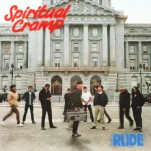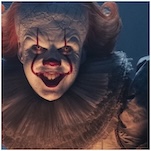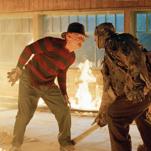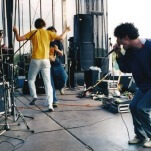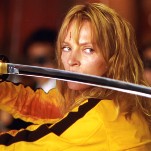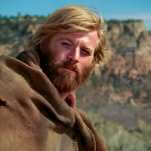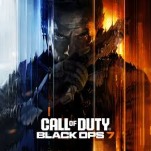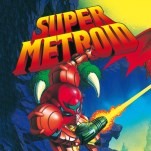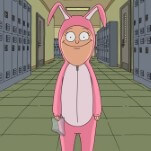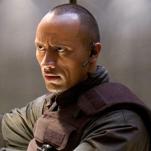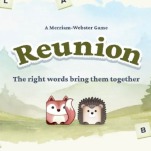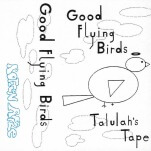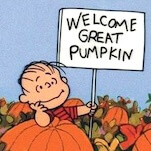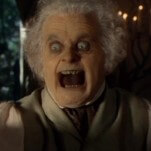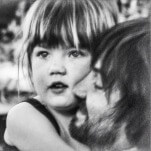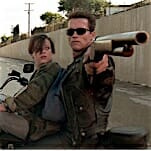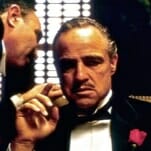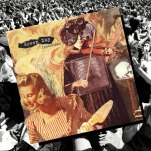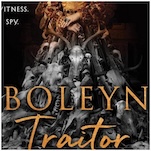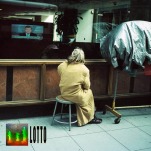The Best Movies on The Roku Channel
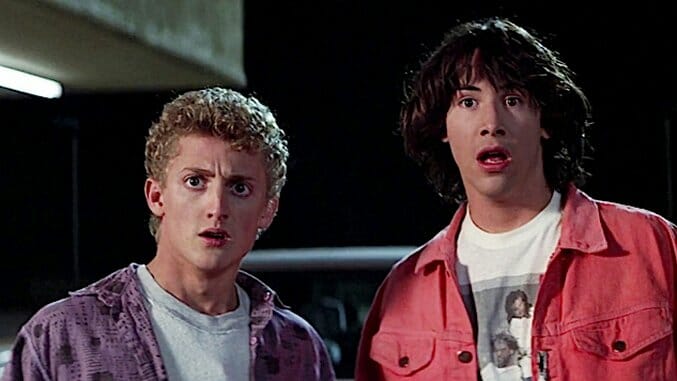
You might be surprised to learn that Roku doesn’t just offer movies from other places, but has plenty of great films in its own right. Yep, the same device that many of us use to access our myriad streaming services (and the place that brought us the Daniel Radcliffe Weird Al biopic) has a free, ad-supported wing all its own: The Roku Channel. Offering thousands of free TV shows and movies, including its Roku Originals and access to paid add-ons like every other service under the sun, The Roku Channel primarily finds its value in its ease of access. If you’re already using your Roku or Roku TV, hey, those movies are already at your fingertips, on demand. As far as the selection, you can find a surprising amount of horror and Jackie Chan movies, alongside some cheeky categories like “Not on Netflix” and “Knuckle and Chuckles.” Good job, Roku curation team.
Here are the best movies on The Roku Channel:
1. Coraline
Year: 2009
Director: Henry Selick
Cast: Dakota Fanning, Teri Hatcher, Jennifer Saunders, Dawn French, Ian McShane
Rating: PG
Director Henry Selick matches the Gothic whimsy of Nightmare Before Christmas and adds even more compelling emotional content with this adaptation of Neil Gaiman’s novella. An unhappy little girl discovers an alternate reality that seems to offer all the magic and wonder her real home lacks, only to discover the sinister implications behind the candy-colored exteriors. Gaiman’s inventive approach to fairy-tale rules matches Selick’s luminescent colors and blend of everyday emotions and dream-like wonders. Perhaps the greatest stop-motion film ever, it even looks great in 3D. —Curt Holman
2. A Christmas Carol
Year: 1984
Director: Clive Donner
Stars: George C. Scott, Frank Finlay, David Warner, Susannah York, Edward Woodward, Roger Rees, Liz Smith
Rating: PG
It wasn’t so much a question of whether A Christmas Carol belonged on a “ghost movies” list (the ghosts drive the whole story!), but which version to choose, it being a tale that has been told on screen so many times. There’s innumerable good options to choose from, from the 1951 classic with Alastair Sim, to the Muppets rendition, to the surprisingly good TV version in 1999 with Patrick Stewart. But we decided to go with the George C. Scott version, because really, what other actor seems so perfectly born to play the cantankerous old Ebenezer Scrooge than Scott, he of the perpetual sour face? This Christmas Carol is a happy middle ground between versions–more accessible (and spookier) than the Alastair Sim one, and more serious-minded than The Muppets, although that’s always a good time. True to Dickens’ original story, and with the perfect Ebenezer behind it, this is as close to the definitive version of the tale as we’ve yet come. —Jim Vorel
3. Platoon
Year: 1986
Director: Oliver Stone
Cast: Tom Berenger, Willem Dafoe, Charlie Sheen
Rating: R
You can boil down Platoon to a single iconic image: Willem Dafoe, hands and arms held aloft as Vietnamese soldiers gun him down, his fellow infantrymen the sole audience to his grim and lonesome demise on the ground. Is he making an act of supplication in his final moments? Is he submitting to death itself? Or is his gesture meant to be interpreted as an acknowledgment of his helplessness, a pantomime outcry at his betrayal and abandonment? No matter how many times this scene plays out, its subtexts remain open to interpretation. What remains the same is our horror at Dafoe’s exit from the film, and what it means in context within the narrative. Platoon, like any Vietnam war movie, is unforgivingly brutal, a picture show of relentless barbarity that recreates one of America’s greatest self-made martial, political and international debacles. Also like any Vietnam war movie, or any war movie in general, really, it repurposes a host of atrocities as tense entertainment, folding the cathartic release of seeing the bad guy get what’s coming to him within the bloody details of America’s intervention in Vietnam. —Andy Crump
4. Ip Man
Year: 2008
Director: Wilson Yip
Stars: Donnie Yen, Lynn Hung, Dennis To, Syun-Wong Fen, Simon Yam, Gordon Lam
Rating: R
2008’s Ip Man marked, finally, the moment when the truly excellent but never fairly regarded Donnie Yen came into his own, playing a loosely biographical version of the legendary grandmaster of Wing Chung and teacher of a number of future martial arts masters (one of whom was Bruce Lee). In Foshan (a city famous for martial arts in southern/central China), an unassuming practitioner of Wing Chung tries to weather the 1937 Japanese invasion and occupation of China peacefully, but is eventually forced into action. Limb-breaking, face-pulverizing action fills this semi-historical film, which succeeds gloriously both as compelling drama and martial arts fan-bait. —K. Alexander Smith
5. Escape From New York
Year: 1981
Director: John Carpenter
Stars: Kurt Russell, Lee Van Cleef, Ernest Borgnine, Donald Pleasence, Isaac Hayes, Harry Dean Stanton, Adrienne Barbeau
Rating: R
In the far future of 1997, when the president’s Air Force One flight is hijacked and crash-lands in the now-maximum security prison of Manhattan, there’s only one man who can save him, a one-eyed Kurt Russell who goes by the name of Snake. He struggles to thwart The Duke’s plans to use the President as a human shield in his march to freedom, all while maintaining his badass disdain for the US government. Written in the wake of the Watergate scandal, John Carpenter’s view of the future is a decidedly cynical one: Snake may be trying to save the president, but not without his classic sneer. —Sean Doyle
6. Trading Places
Year: 1983
Director: John Landis
Stars: Dan Aykroyd, Eddie Murphy, Ralph Bellamy, Don Ameche, Denholm Elliott, Jamie Lee Curtis
Rating: R
A biting take on the The Prince and the Pauper story as filtered through the prism of the Decade of Greed, Trading Places stars Dan Aykroyd and Eddie Murphy as, respectively, high class broker Louis Winthorpe III and homeless street vagrant Billy Ray Valentine. As part of a “nurture vs. nature” experiment by the Duke Brothers, two wealthy, yet unscrupulous business magnates, Louis and Billy end up abruptly, per the title, trading places on the social ladder. The Dukes frame Louis for drug dealing, resulting in him losing both his job and his girlfriend, and then bail Billy out of jail and provide him with Louis’ old job and high-class apartment. Once Billy and Louis discover this deception, they launch a plan for vengeance. Featuring both Murphy and Aykroyd at the top of their game, Trading Places represents a prime example of the kind of smart, yet decidedly un-PC comedies that could only exist at a certain point in the ’80s (Aykroyd’s blackface-heavy disguise in one scene, for example, would never fly in today’s market). A stone-cold ’80s classic if there ever was one. —Mark Rozeman
7. The Texas Chain Saw Massacre
Year: 1974
Director: Tobe Hooper
Stars: Marilyn Burns, Paul A. Partain, Edwin Neal, Jim Siedow, Gunnar Hansen
Rating: R
One of the most brutal mainstream horror films ever released, The Texas Chain Saw Massacre, based on notorious Wisconsin serial killer Ed Gein, resembles art-house verité built on the grainy physicality of its flat Texas setting. Plus, it introduced the superlatively sinister Leatherface, the iconic chainsaw-wielding giant of a man who wears a mask made of human skin, whose freakish sadism is upstaged only by the introduction of his cannibalistic family with whom he resides in a dilapidated house in the middle of the Texas wilderness, together chowing on the meat Leatherface and his brothers harvest, while Grandpa drinks blood and fashions furniture from victims’ bones. Still, The Texas Chain Saw Massacre might not be the goriest horror film ever made, but as an imaginal excavation of the subterranean anxieties of a post-Vietnam rural American populace, it’s pretty much unparalleled. Twisted, dark and beautiful all at once, it careens through a wide variety of tones and techniques without ever losing its singular intensity. (And there are few scenes in this era of horror with more disturbing sound design than the bit where Leatherface ambushes a guy with a single dull hammer strike to the head before slamming the metal door shut behind him.) —Rachel Haas and Brent Ables
8. Bill and Ted’s Excellent Adventure
Year: 1989
Director: Stephen Herek
Stars: Keanu Reeves, Alex Winter, George Carlin
Rating: PG
Not Neo, not Johnny Utah, not John Wick—there will never be a more perfect role for Keanu Reeves than kind-hearted time traveling slacker “Ted” Theodore Logan. Joined by his intrepid best friend Bill (Alex Winter—wearing a surprisingly acceptable muscle shirt sans mid-riff), the two peruse the whole of Western Civilization in their time-skipping phone booth to kidnap historical figures, use them to keep from flunking History and ensure—yaddah yaddah yaddah—the safety of the human race. For many of us, this was a formative film: a conflation of pop culture and History for Dummies; a reason to pay attention in class; the first time we ever tried to figure out what “69” meant. Technical rules don’t much apply here; instead, the message is clear: a good friend will stick with you until the end of time.—Michael Burgin
9. House on Haunted Hill
Year: 1959
Director: William Castle
Stars: Vincent Price, Carol Ohmart, Richard Long, Alan Marshal, Carolyn Craig, Elisha Cook Jr., Julie Mitchum
Rating: NR
Every William Castle movie has its own campy charms, but House on Haunted Hill is the guy’s masterpiece. It’s got it all: Vincent Price at his goofiest, a big spooky house, a mystery and a profoundly non-frightening walking skeleton. The gimmick this time around was referred to by Castle as “Emergo,” and it amounted to a plastic skeleton on a pulley system being flown over the audience—not his most creative, but shameless enough that only Castle would stoop so low. To me, this is the quintessential 1950s horror film, even though it comes at the end of the decade. It’s totally tame by today’s standards but has some fun, over-the-top performances, a bit of witty dialog and a large helping of cheese. I can watch this thing over and over without ever getting tired of it. It’s like horror comfort food. The colorized version is even more fun, replacing the static black-and-white original with an unrealistic palette of color-coded characters you will remind you of the cast of Clue. —Jim Vorel
10. Terrifier
Year: 2016
Director: Damien Leone
Stars: Jenna Kanell, Samantha Scaffidi, David Howard Thornton
Rating: NR
It’s really no easy feat to put together a modern slasher movie with retro inspiration, walking the delicate line between genre parody and loving homage. Too many have tried exactly this and ended up with a result that spends all its time winking at genre tropes, rather than simply delivering the goods. Terrifier is one of the few that at least partially works in the spirit in which it was intended, thanks to its depraved attitude, stylish bloodletting and key central performance. This movie hinges entirely around the quality of David Howard Thornton’s performance as “Art the Clown,” elevating it from what could be perceived as simply a riff on Stephen King’s It to a genuine genre effort of merit. Much of that just boils down to Thornton’s terrific facial expressions as Art, and his stellar costuming and design—he is tailor made to be a recurring slasher film character, and had this series first cropped up in 1982, we probably would have seen half a dozen Art the Clown sequels. The rest of the production is on the cheap side—it often feels like they’re going for the degraded film stock look of Tarantino’s Death Proof, but can’t quite pull it off—but there’s more than enough gore to satisfy any horror fan’s hunger. If killer clowns are your thing, it’s essential. —Jim Vorel

